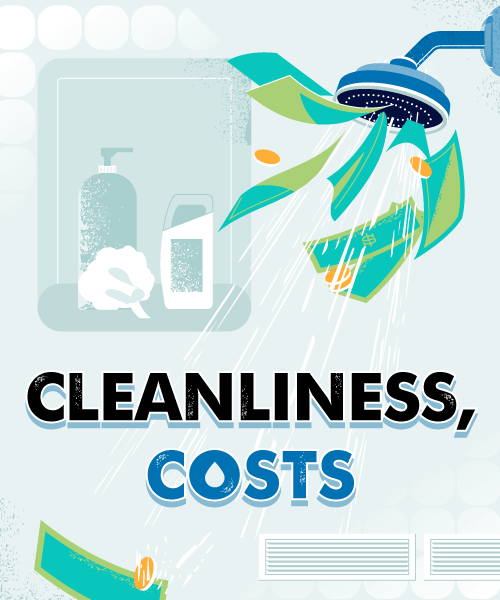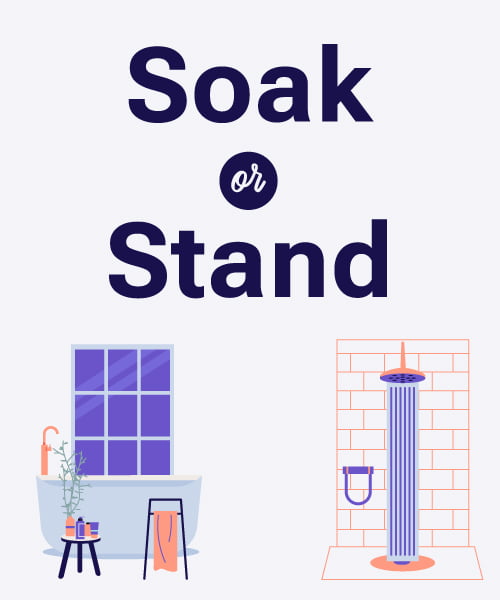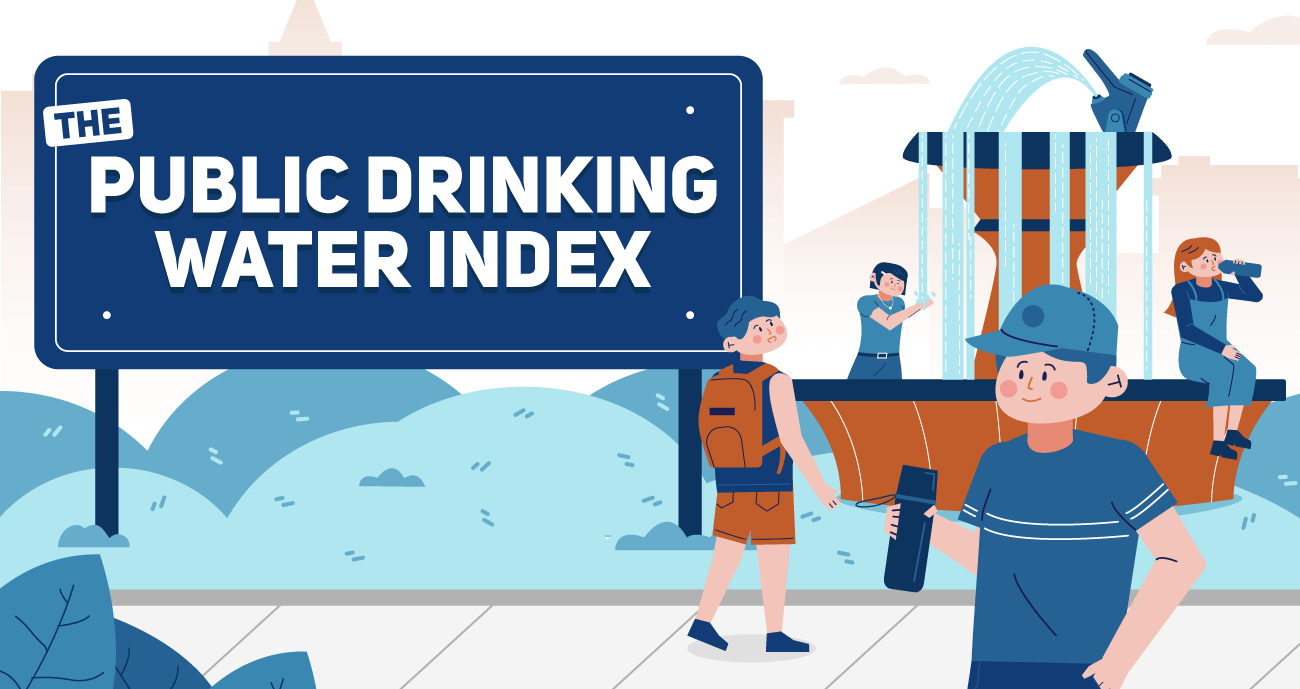
Water fountains have been through a lot of ups and downs lately.
The phenomenon enjoyed a golden age in Victorian times, with fountains offering an alternative to unclean water or uncouth boozing, depending on the fountain's sponsor. But a century on, fountains went into decline around the world as bottled water was marketed as a more sanitary and more stylish alternative to drinking from the tap.
Then, just when the fountains were enjoying a resurgence in response to the backlash against plastic bottles, COVID-19 hit. Nobody wanted to put their mouth near anything anyone else had touched — nor even to share a tap handle or push button, despite the fact that you're unlikely to pick up Covid or anything else through sharing a water fountain.
"Remember," says GP and journalist Ann Robinson, "disease outbreaks from municipal water fountains are extremely rare and tend to be isolated cases involving individuals with an impaired immune system."
In fact, modern, well-maintained water fountains are a safe place to drink — despite common public fears: "The incidences of contamination we've really seen are not because a dog was licking the fountain," explains Peter Gleick, co-founder of the water think tank the Pacific Institute. "The real problem is with the infrastructure — older piping could have lead, which was the problem in Flint, Michigan, where the water picked up contaminants in the pipes."
With lockdown over and the climate crisis back at the forefront of our minds, fountains are coming back. So, QS Supplies decided to find out where in the world you're most likely to find a water drinking fountain nearby.
What We Did
QS Supplies obtained figures on more than 276,000 public drinking fountains from the OpenStreetMap website. We then used this data to compare the number of public drinking fountains against local population numbers (per 100k people) in every country and hundreds of global cities.
Key Findings
- Montenegro has 472.4 public water fountains per 100,000 people — the most of any country.
- Zürich in Switzerland has more public water fountains per 100k people than any other city (221.9).
- Bournemouth is the UK city with the most public fountains: 4.36 per 100k people, against a UK average of 2.08.
- Washington D.C. is the U.S. city with the most water fountains: 24.83 per 100k, against a U.S. average of 5.01.
Montenegro Leads the World in Drinking Water Fountain Provision
Among the 138 countries with available data, we found that the average number of drinking fountains is just 12.63 per 100,000 people. Most have fewer than 10, and only the top three have more than 100. This top three is a curious assortment of European countries: the small, picturesque Balkan country of Montenegro takes the lead by a considerable margin, with nearly 3½ times the fountains per head as second-placed Hungary. According to one Tripadvisor user, "It is mountain water and Montenegro has no big industry that can pollute it."
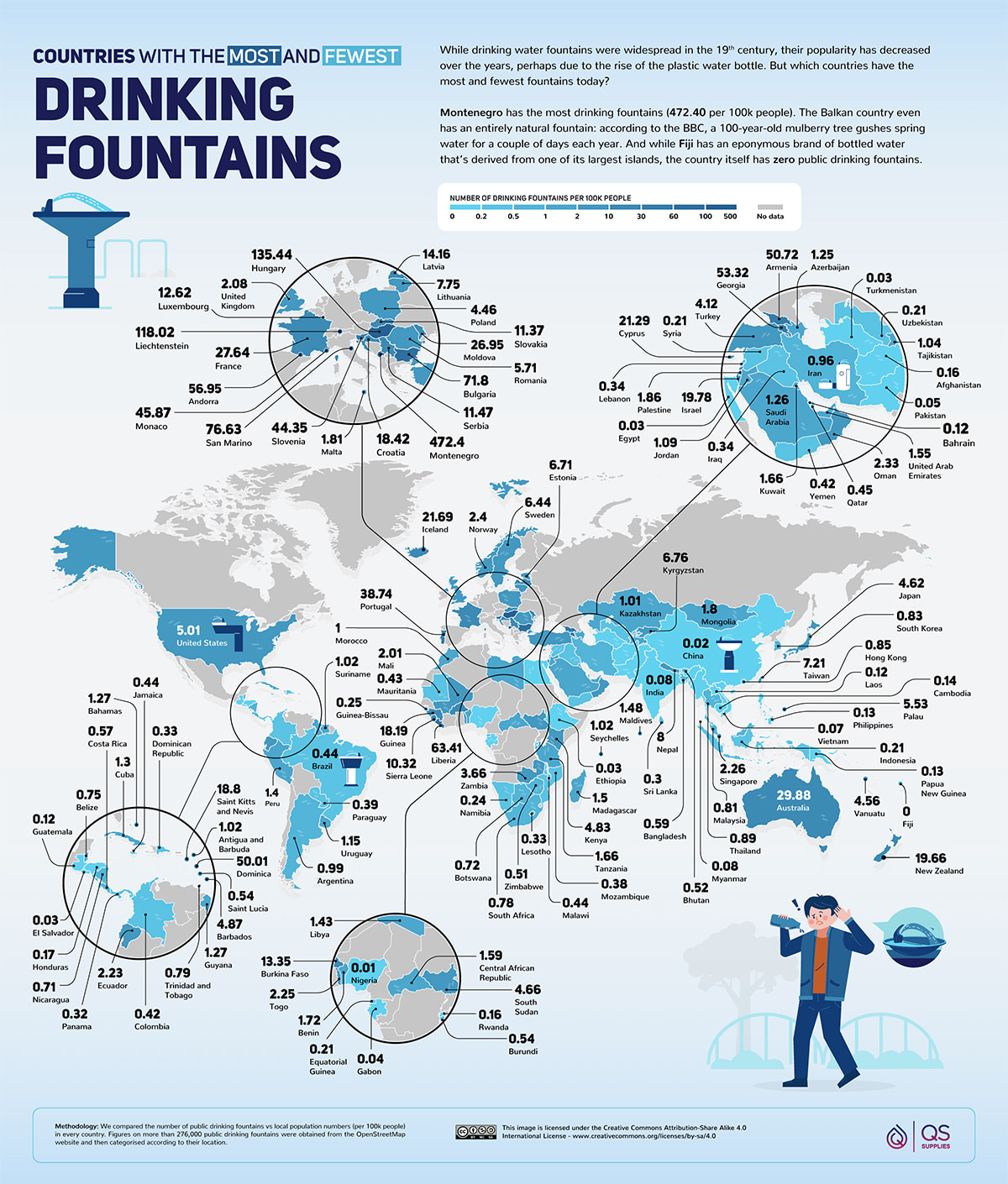 Click here to view full size
Click here to view full size
The UK does not fare well in this comparison. It comes in with the 53rd-highest number of fountains - just 2.08 per 100,000 people. It was written, in 1860, that Londoners could "scarcely avoid noticing the numerous fountains which are everywhere rising, almost as it would seem, by magic, into existence." Often sponsored by wealthy philanthropists and appearing as fantastic architectural structures (with moralising details) on church property, they have long since fallen into decline.
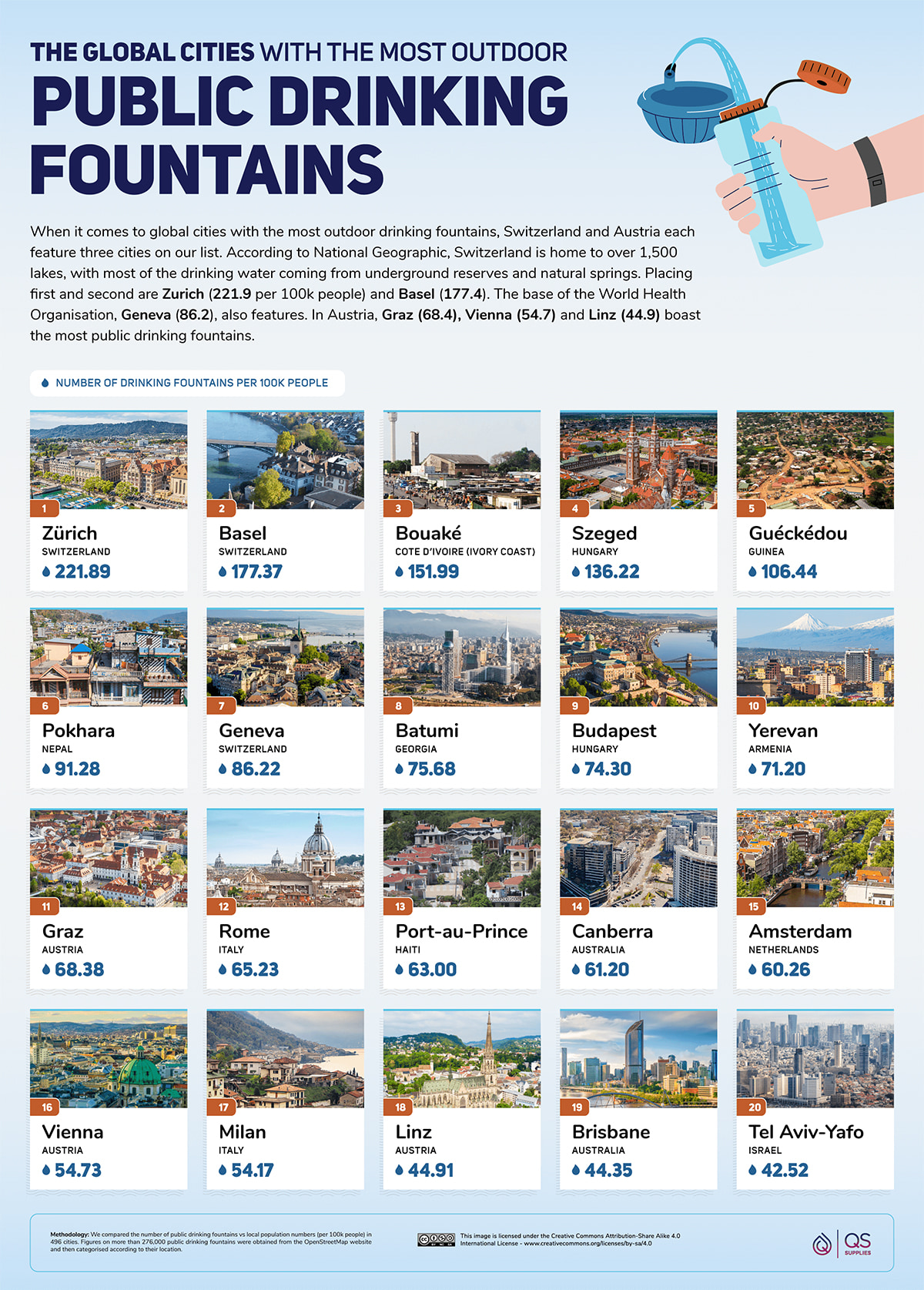 Click here to view full
size
Click here to view full
size
Neither does the UK have any cities among the world's best-served for drinking fountains. The honours go to a pair of Swiss cities, Zürich and Basel. Zurich is Switzerland's biggest city and prides itself on the ready availability of clean, drinkable fountain water - its fountains even pop up as major features of an official "city of water" tour. Although some of Zurich's fountains date back to the Middle Ages, they are well-maintained, and unless you see the sign "Kein Trinkwasser" (not drinking water), it should be good to drink.
Bournemouth Eclipses London as UK Capital of Drinking Fountains
Bournemouth is the UK's capital of drinking fountains, despite offering a mere 4.36 per 100,000 people. Last year, beachgoers in the city and its surrounding coastline were given the right to "demand free drinking water from seafront kiosks and new 'hydration' stations" to answer the issue of excessive bottled water use at the seaside. Bournemouth gets bonus points for its Park Foundation's dedication to providing fountains for dogs.
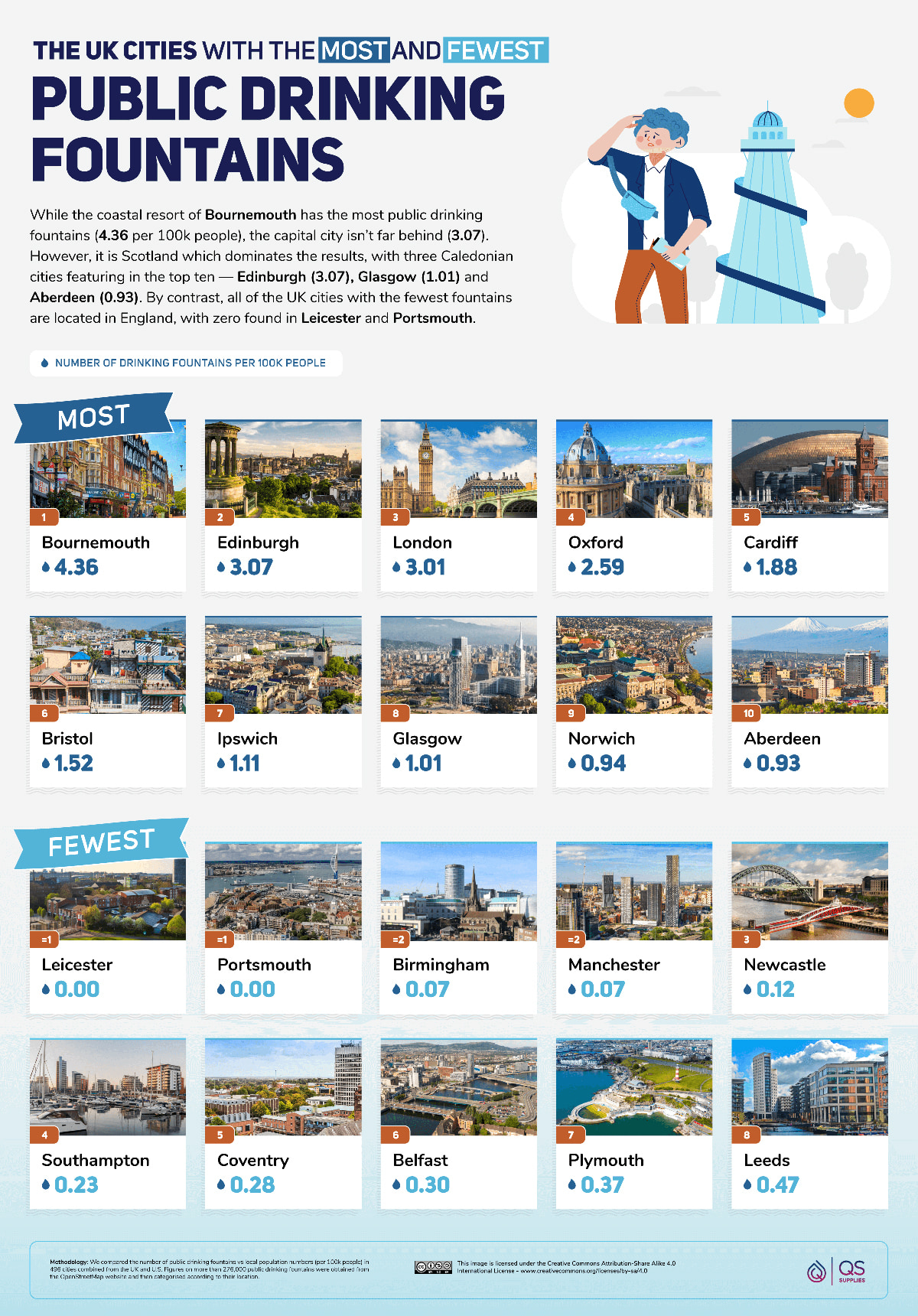 Click here to view full
size
Click here to view full
size
The Metropolitan Free Drinking Fountain Association led the drive to bring drinkable water to London's flaneurs. In 1859, they opened the first of "nearly 800 fountains and [animal] troughs" in St Sepulchre's churchyard, along the road from St. Paul's Cathedral, soon bringing succour to the parched throats of 7,000 daily users. Victorian fountains tended to be ludicrously ornate, and most fell out of repair in the following century. However, Thames Water and the Mayor of London are installing lots of new ones in the city, with 110 new public fountains already in place. They're hardly as ornate as their Victorian forbears but do at least help the capital to maintain third place in the national table with 3.01 fountains per 100,000 people.
Oregon's History of Drinking Fountains Still Holds Up
Oregon is the top state for water fountain provision, by a reasonable margin. As everyone knows, Portland, OR, is the home of the iconic four-bowl Benson Bubblers, some donated by philanthropist Simon Benson in the early 20th century, others built in their likeness later on. This is just one element of Oregon's rich history of drinking fountains which includes, one century ago, the distribution of fountains alongside the Oregon highway, "each fountain being designed by the engineers to harmonise with the surroundings and to make use of the native materials at hand."
 Click here to view full
size
Click here to view full
size
A story from Florida illustrates the pressures - and the folly - involved in keeping locals hydrated. When the University of Central Florida built the 45,000-seat FBC Mortgage Stadium in 2007, the university claimed that it would be too costly to install and maintain fountains. Instead, bottled water would generate revenue. "But at the opening game, with temperatures reaching near 100 degrees, vendors ran out of water," reports the Washington Post. "Some 60 attendees were treated for heat-related issues; 18 were hospitalised for heat exhaustion. The university eventually installed 50 fountains."
 Click here to view full
size
Click here to view full
size
According to calculations made in 2007, drinking the recommended eight glasses of water a day "costs around about 49 cents a year - if you take it from a New York City tap." Drink the same from bottles, and that figure increases 2,900 times to around $1,400 per year. New York City has just one-quarter of the water fountains that Washington, D.C. has, proportionally speaking. However, the fountains on some D.C. trails are turned off - "winterised" - in the colder months.
Good for You, Good for the Planet
According to Thames Water, "every second, around 185 single-use plastic bottles end up in landfills, rivers and oceans across the UK. If we carry on like this, there'll be more plastic in the ocean than fish by 2050." The following table provides our full data on where you're most likely to find access to drinkable fountain water when you need it around the world.
The company also points out that their "tap water contains naturally occurring minerals like magnesium and calcium – which are good for your heart and bones." Good for the planet and for you and your dog? No wonder the Victorian craze for public water-drinking fountains is bubbling up again.
METHODOLOGY & SOURCES
We compared the number of public drinking fountains vs local population numbers (per 100k people) in every country and every U.S. state. We also compared 496 cities combined from the UK and U.S. and up to the three most populated cities and capital cities in every country globally.
To qualify in our final sample, a country or city must have a population of at least 100,000 people.
Figures on more than 276,000 public drinking fountains were obtained from the OpenStreetMap website and then categorised according to their location. We omitted a small sample of indoor public drinking fountains from our final analysis.
For the purpose of local analysis, figures on drinking fountains in UK and U.S. cities were counted separately from the ranking of drinking fountains in our list of global cities.
The data is correct as of June 2023.


